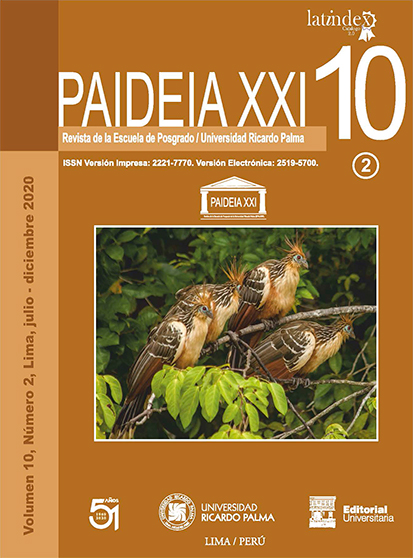PREVALENCE OF GASTROINTESTINAL PARASITES IN DOMESTIC CATS (FELIS SILVESTRIS CATUS SCHREBER, 1775) IN LA HAVANA, CUBA
DOI:
https://doi.org/10.31381/paideia.v10i2.3445Abstract
The prevalence of gastrointestinal parasites (PGI) in domestic cats (Felis silvestris catus Schreber, 1775) for Havana, Cuba, was determined to reduce pets' public health risks. The prevalence value was calculated from the reports in “José Luis Callejas” Veterinary Clinic from Centro Habana municipality from 2014 to 2016 of assisted cats in that clinic from 2016 to 2018. 49.1 % of the investigated cats were positive for PGI. The prevalence of PGI in a domestic cat from 2014 to 2018 was 3.0 and 0.23 %, according to the feline population that attend the clinic (examine rate). The prevalence of PGI was also according to the official amount of domestic cats from 2014 to 2018 in Havana city by the Cuban Veterinary Authority. Entamoeba sp., Isospora sp., Ancylostoma sp., Toxocara sp., Dipylidium caninum (Linnaeus, 1758) Leuckart, 1863 and Trichuris felis (Diesing, 1851) Diaz-Ungria, 1963 were the PGI genus identified in domestic cats. All of them are zoonotic genus except Isospora sp. The most affected municipality by PGI in F. silvestris catus were Centro Habana and Plaza of the Revolution (14 % each one), Cerro (13 %), 10 de Octubre (10 %). Playa and La Lisa have 9 % each one too. The paper concludes that the parasitic zoonoses problem is poorly attended in Cuba. It is very important in F. silvestris catus species because they have a higher preference as a pet. That is why the attention and management of zoonotic parasite in cat required the collaborative, multisectoral and multidisciplinary relationship that the conceptual One Health frame proposed.
Key words: Entamoeba - Ancylostoma - Toxocara - One Health – zoonoses












